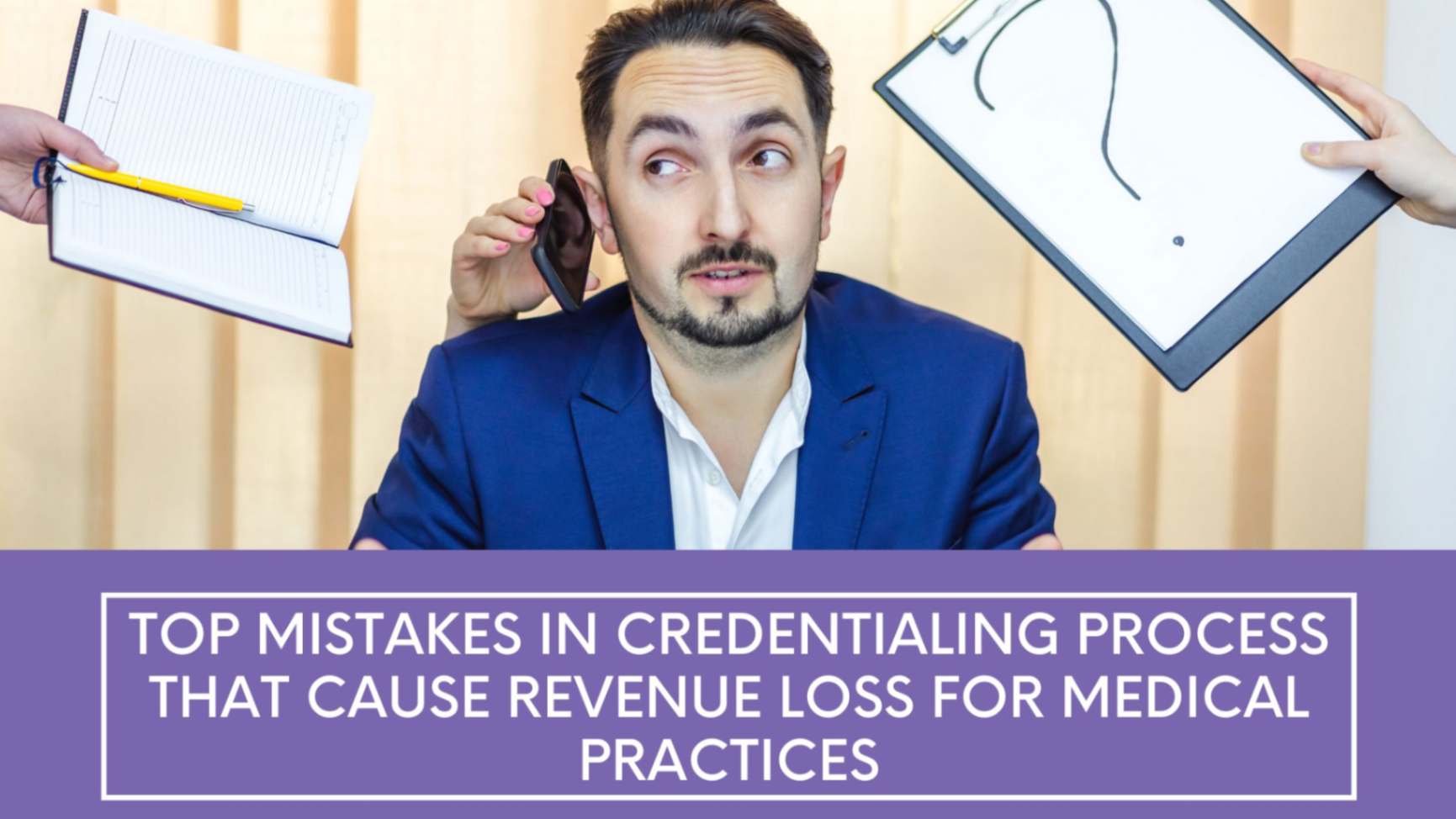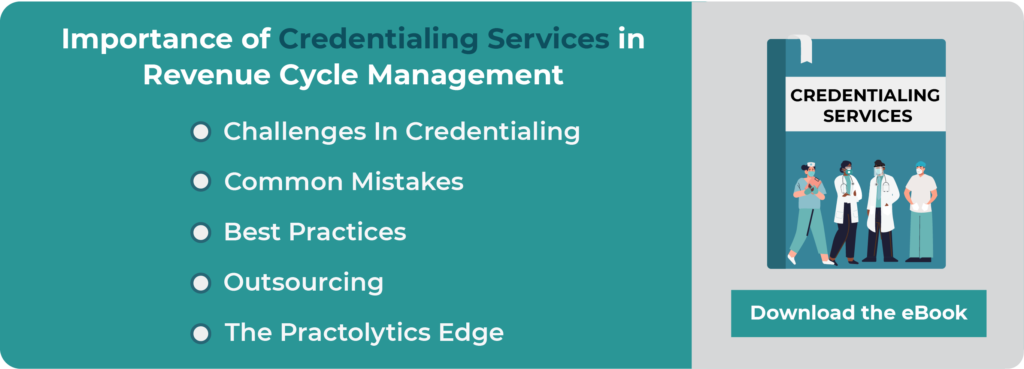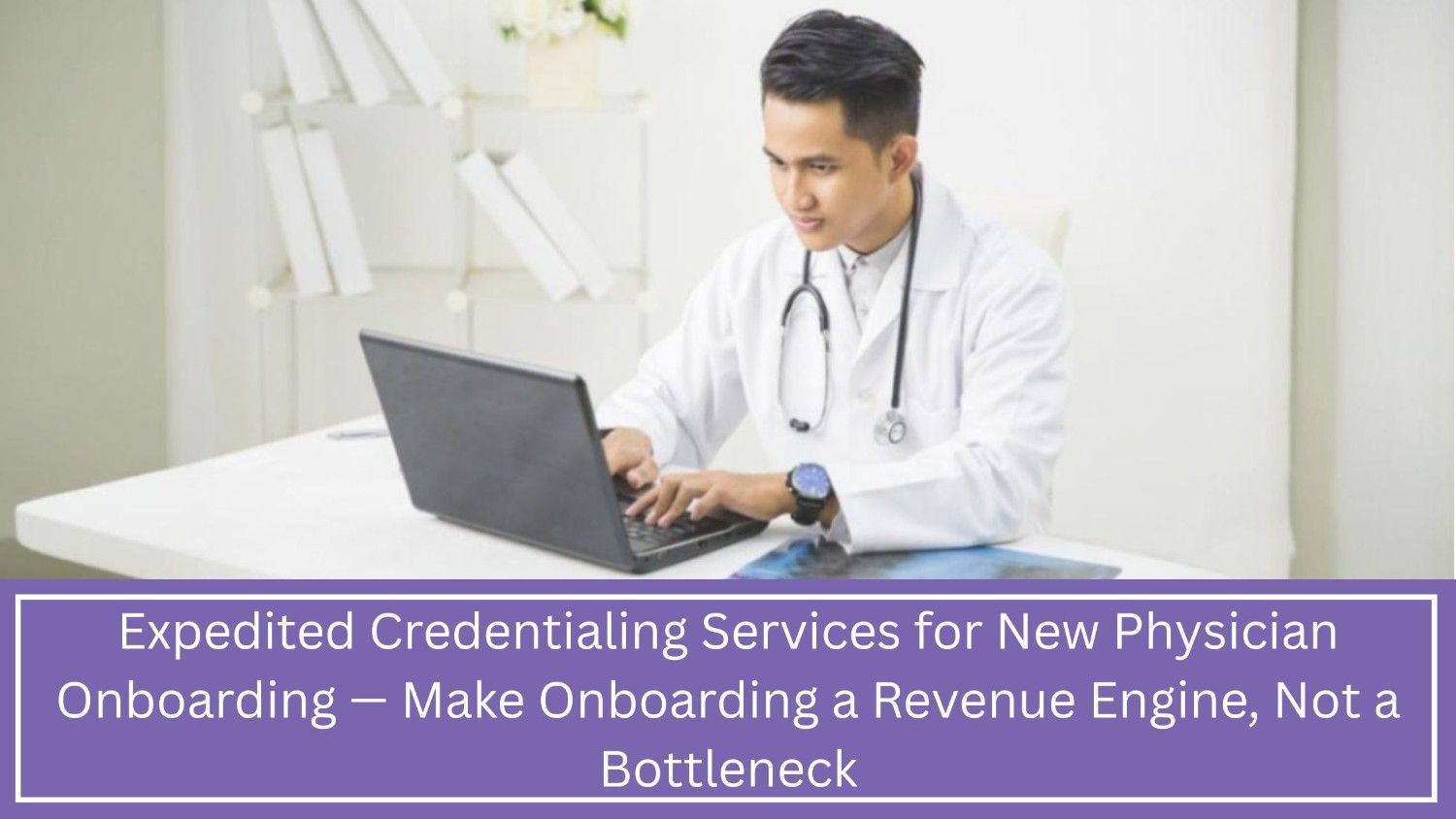Top Mistakes in Credentialing Process that Cause Revenue Loss for Medical Practices
Every industry faces demands and challenges. In the healthcare sector, the key is to maintain standards to ensure high-quality medical care is provided to patients. Here, there is no room for treatment errors and costs remain optimum; precisely why credentialing is crucial.Top mistakes in Credentialing process that cause for revenue loss for medical practices is a quality assertion process among medical practitioners to bring down the incidence of medical errors. It involves a thorough verification of a practitioner’s educational qualifications, licensure, previous practices, training background and more. Credentialing is conducted before getting hired to a healthcare facility or adopting a new insurance provider.
For patients, it is an assurance that they are being cared for by truly skilled hands. For the facility, it ensures that the staff they hire are capable of rendering standardized healthcare and avoid the risk of malpractice lawsuits and liabilities. For insurance companies, having proficient and competent providers in their panel help in reducing treatment cost and guarantee quality. And, lastly, for the professional, having credentialed with a large network of payers means a more successful practice.
Any individual or facility providing invasive or non-invasive medical care is required to get credentialed, including doctors, nurses, dentists, podiatrists, optometrists, chiropractors, physical therapists, physician assistants, and mental/behavioural health providers. Also, facilities such as hospitals, clinics, surgery centres, diagnostic centres, labs, ambulance services, sleep study clinics, radiology centres, and hospice cares need to be credentialed.
Table of Contents
Credentialing includes:
• Provider credentialing – Verifying the qualification, practising licences and career background of the individual before commencing consultations.
• Privileging – To get sanctions for performing specific treatment procedures.
• Enrolment – Getting credentialed by insurance providers to be listed in their panel of providers followed by contract negotiations to receive reimbursements and payments.
This is how the process usually runs: It starts with filling out the credentialing application and gathering all the necessary documents. Next is a wait for primary source verification and clarifications. Also, additional documents are provided if required. Finally, you can get enrolled and update the billing process with the new insurance provider.
The entire process is quite complex for more than one reason; there are tonnes of paper works involved and it demands utmost accuracy, trivial legal implications are present, critical deadlines, very time consuming, challenging standards of compliance to match and there will be a huge loss of money if things go wrong with the process.
Read – 5 Smart Tips for Improving Revenue Cycle Management
Most common credentialing mistakes committed on the go
Credentialing in itself is quite a time-consuming and complex task, and doing it wrong can result in big financial losses. Mistakes with credentialing put the entire enrolment process in jeopardy, plus there could be impending legal complications as well. Below listed are a few scenarios on what could go wrong with credentialing:
1. Mistakes involving timing and planning
As the credentialing process involves verification of numerous amounts of data, it normally takes around 3-4 months to complete depending on the scenario. The collection and preparation of relevant documents for the application may take longer than expected too. Many times the staff at the facility fails to plan for this time delay. It affects the health care provider and the facility equally.
For the professional, it means having to wait further to start consulting the patients and rendering his/her services; valuable time of the doctor is at stake.
For the facility, unless the new practitioner on board is credentialed and enrolled, the insurance companies cannot reimburse the bills from his/her services, which is a serious loss of revenue for the hospital. Improper planning on the time frame required for processing the application is a common blunder in this regard.
2. Data entry mistakes
When the application is lacking in accuracy and details, look no further for reasons to delay and denial of credentialing. The most common errors are:
Typo errors: Mistakes while entering the data—wrong, or interchanged information leading to confusion. Failing to do a recheck after data entry for misspelt titles, postal/email addresses, identification/licence numbers, wrong NPI numbers etc.
Missing information: Absence of relevant data or entirely omitting a much-required document due to some mix-up stands out in the list of common credentialing mistakes to avoid while manually assembling the documents.
Improper documentation: Poor handling and organization of documents leading to ambiguity and confusion in the entire application process, often requiring resubmission.
3. Mistakes involved in the application process
Things that can go wrong under this include:
Incomplete application: Applications are often labelled incomplete and rejected if any part of it is left blank or relevant supporting documents are not attached. It is essential to have the documents showcasing the career history of the medical practitioner right from getting licenced to date of verification. Missing documents from this period might get interpreted as an ambiguity in the career line.
Improper authorization: Applications sometimes lack the necessary signature and attestation from the respective individuals involved, which are all considered grave credentialing mistakes followed by rejection.
Delays: Delayed handling of queries arising from the authorities regarding the application is another scenario where the entire process gets stuck in the middle. Most of the time they go unanswered and are ignored by the clinic staff in the busy daily schedule.
Failing to track the status of the application: Once the application is put forward chances are there it might get hung up in the air if the insurance provider is a very busy one with a great number of file-inflow. Often negligence happens as failing to follow up and track the status of the application, prolonging the process further. Precious time and revenue are lost on this front, waiting for updates from the insurance companies.
Read – 10 Ways to Improve Your Billing Process
4. Compliance mistakes
Each state projects different requirements for credentialing and failing to be compliant with these requirements could be one of the major credentialing issues in healthcare. It can be due to:
Ignorance of the staff: When the staff at the clinic are assigned to do the credentialing work, sheer ignorance on their part regarding the demands of the insurance provider messes up everything. It takes a trained person to get it right.
Not confirming the standard regulations in practice: Each insurance company demand different criteria be met regarding their credentialing and enrolment process. Not being compliant with the specifications will delay the payment process.
Not knowing the specifics of the speciality being practiced: Lack of experience in credentialing or privileging for speciality practices extends to further issues with the billing process as well. Specific documents to prove competency in the speciality practice will be needed at the time of credentialing, apart from the normal.
Lack of awareness of legal implications: The clinical staff in charge of doing the credentialing work may not be aware of the legal implications of the application in hand. A layman’s lack of awareness of legal jargon is quite understandable, but it can lead to legal risks for the facility if things are not in order.
5. Mistakes involved with the enrolling process
The enrolment process is directly related to billing and payment. Hence, any errors related to this can cause fluctuation in the revenue cycle. Let’s look at the common mistakes happening with the enrolment process these days.
The application process not meeting the insurance provider criteria: Every insurance company comes up with different a set of rules, timelines, protocols and regulations for enrolling a new provider to their panel. Not meeting the provider criteria is a common medical credentialing mistake.
Not knowing the insurance companies in the area: Getting credentialed to set up a practice in a new locality needs connectivity to the network of insurance providers in the region. For somebody new in the area, it is practically impossible to get enrolled in the panel without knowing the companies.
Not assigning staff to answer queries/clarifications from the companies: Prior to enrolment, insurance companies might come up with multiple queries, clarifications and primary source verifications. If the staff at the facility is not assigned with appropriate roles to take up these queries for you, the payment process gets further delayed.
Revenue loss: Each day delayed in getting that new practitioner in the medical facility enrolled in the insurance provider’s panel, pertains to the loss of revenue for the facility; whatever be the cause of delay.
6. Issues due to lack of digital support
With the extensive paperwork involved with credentialing, it is nearly impossible to keep the process organized if it is done manually. And, there are added hazards too, such as:
Not being updated with the process: The credentialing process by the state as well as private insurance companies keep getting updated with new regulations in place. Keeping up with periodic re-evaluations is quite a burden if the documents are still saved as hard copies.
Issues with the promptness of application: Keeping up with deadlines is hard when the process is done manually. So is the difficulty in re-accessing the documents when needed, to say nothing about the accuracy factor.
Failing to renew licences and credentials: Trying to cope with the busy schedule, there are good chances for the clinic staff to forget about renewing the credentials and licences. The certificates sometimes go beyond their renewal date within the period of the credentialing process, which if not automated might go unnoticed.
Read – Role of medical billing software in RCM services
Troubleshooting these constraints effectively
Internal credentialing process vs. outsourcing to external services
In light of all the possible credentialing mistakes mentioned above, attempting to process the credentialing internally at your facility may not be that great an idea. It takes away from the staff the precious time intended for patient care, burdening them with time-consuming, huge piles of paperwork. They are neither trained nor experienced to fulfil the requirements the process demands and that may cost you a lot in the end.
Comparatively, outsourcing the process to external credentialing service providers sounds more promising just for two things—time and money. Reputed organisations possess talented staff experienced in the process to handle the challenges associated with it smoothly for you. They can help in speeding up the process in many ways such as:
Advantages of going digital: Tackling the credentialing process digitally ensures accuracy and promptness. There will be no room for human errors or fraud. With the help of advanced software, everything from data entry, documentation, verification to the electronic submission of application can be done at the same time, making the process cost-effective and streamlined.
Professional application process and data verification: Gathering the necessary documents required will be easier and less challenging with the right credentialing service implemented. Contacting primary sources to speed up the verification process will be included in the services, helping in preventing delays.
Adherence to regulations and insurance company policies: The team assigned to credentialing process are duly updated to match the latest rules and regulatory requirements in practice. Ensuring compliance to the latest standards is a matter of great significance and they know it.
Wide network of insurance providers in the list: Credentialing services can provide you with a well-populated list of insurance companies in the locality, helping you connect with as many of them as possible. Having authorized claims from multiple insurance providers enables you to cater to patients with all kinds of payment coverage, which in turn refers to increased clientele and boosts revenue.
Keeping track of the process: Part of the service will be updating you regarding the status of your application. Tracking the stage at which the credentialing process lies at the moment, helps you call for the necessary interventions to speed up the process.
Trained staff to represent you throughout the process: You can have a trained staff member representing you when there are queries and clarifications from the insurance companies as a part of the verification process to make sure nothing goes ignored.
Automated renewal of documents: Documents that require periodic renewal can be handled on time if the whole process is automated. It avoids the hassle of re-applying with the companies after missing out on the last dates.
Aid with re-credentialing: According to the Federal requirements, re-credentialing is needed every three years to re-evaluate the competency of the medical practitioner. Most credentialing services takes care of it periodically before the deadline.
Contract negotiation services: Efficient, comprehensive contracts will be fabricated for negotiations based on thorough research on the current market standards and trends in practice.
Boost in revenue: With most patients referring to the Internet to find the right health care provider for them, having yourself properly credentialed vastly boosts your reputation and business. Being enrolled with multiple insurance companies’ panels helps with more patient referrals as well. And, both improve profitability.
In modern clinical practice, trends are changing, demands are altering and challenges are high. It is not easy to maintain the balance between running the practice and tackling administrative chores such as credentialing and enrolling all on your own. To run a peaceful and thriving long term practice, get yourself credentialed with the help of experts in the industry.
Read also – In-house Medical Billing vs. Outsourced RCM
Talk to Medical Billing Expert Today — Get a Free Demo Now!






